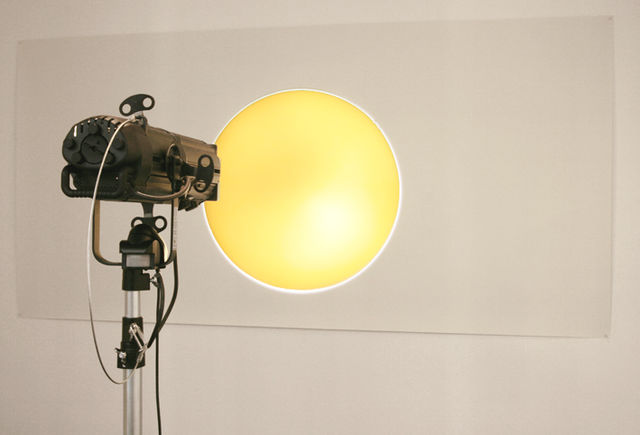
In her first solo show at Galerie Diana Stigter, Amalia Pica (Argentina, 1978) presents her latest body of work, exploring the performative nature of thought and speech and how they work as a happening.
The mood in the gallery is set
with a red carpet, which outlines a possible way to walk through the space. The
carpet ends in a group of microphones, which seem to be inviting the public to
give a speech. Directly contradicting themselves, they won’t amplify any sound.
‘Robinson Crusoe’, a diptych
of a photograph and Daniel Defoe’s renowned novel, depicts a male figure
reading while seating in an empty football stadium. Highlighting the tension
between collective passion and isolation, this reader is the only (lonely)
figure present in this show. Pica’s interest in Robinson Crusoe, a story about
ultimate isolation, comes from a curiosity as to how a narrative can unfold
when there isn’t any dialogue. The novel is written by Robinson himself, but
who is he actually writing for and why does he even bother?
Also dealing with a certain sense of spectacle and failure, which are chief instruments of Pica’s work, an ‘Inverted Podium’ (2010) turns winners into losers and losers into winners, while in the back room of the gallery a spotlight seems to be playing a game of hide and seek with a large circle of watercolour (‘Under the spotlight’, 2010).
Further, a small drawing made by leaving a post-it note under sunlight for one year acts as a forgotten reminder. Nearby, a tin can telephone hangs is a leftover of a tableau vivant performed at the opening. The tableau features two silent ‘Chronic listeners’ holding the tin can telephone to their ears and not doing much else, just waiting for the other person to start the dialogue. These chronic listeners condense the ideas about the possibilities of enunciation underlying all the pieces in the show: the question as to why we perform becomes the question about for whom we are performing.
Amalia Pica’s exhibition is an exploration of the role of the listener as the one who makes conversation possible. The one that sets the ground for babbling, blabbering, chattering, gibbering, jabbering, pattering, prattling, rattling, yammering, yada yada yada.